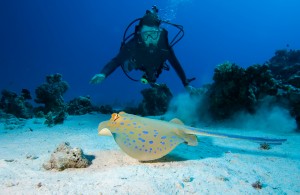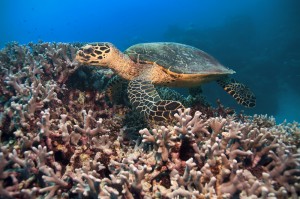When to go to the Great Barrier Reef

When to go to the Great Barrier Reef? One of the seven wonders of the natural world, the Great Barrier Reef is commonly seen on many travelers bucket lists as a must-see within their lifetime. With breathtaking picturesque beaches, a marine life that includes over 3000 separate reef systems, islands and activities available for all visitors to enjoy it is really no wonder why it has made it on so many people’s lists.
The Great Barrier Reef is one of the world’s natural wonders that can be recognized from outer space. It is one of the largest living organisms in the world providing visitors with an incredible experience under the sea. This leaves many visitors wanting to know when is the best time to go to the Great Barrier Reef for an unforgettable experience with nature.
 Best time to visit the Great Barrier Reef
Best time to visit the Great Barrier Reef
The Great Barrier Reef is accessible year round, but there are times that are better and times that bring into question about a trip to this wonder of nature. The majority of visitors to the Great Barrier Reef are looking to snorkel or scuba dive. April and May are easily argued to be the best time to visit the Great Barrier Reef when considering the weather, clarity and the crowds altogether.
When to go to the Great Barrier Reef based on Weather
Although there can be visitors at the reef year-round, the seasons and weather does change quite a bit throughout the year. If you are somewhat particular about your weather conditions on holiday such as not wanting to get rained on, then here is some useful information that can help in deciding when the best time for you to go will be…
June-October: Since Australia falls under the southern hemisphere, these months are the winter months and when temperatures are at their coldest. Although colder than the summer months, the temperature rarely drops to anything below 60 degrees F. The plus side to this season is that it is considered the driest of them all so chances of encountering rain are much slimmer.
November-March: These are the summer months and when the rain sets in and the average temperatures begin to increase to about 85 degrees F. Because of the rain, expect a rather muggy climate that can be a bit uncomfortable at times. However, with plenty of hotels and accommodations nearby the reef, chances are you will have a nice air-conditioned place to escape from the humidity.
April-May: Normal daytime temperatures between these two months are usually in the high 70’s F and sometimes reaching to the low 80’s with a much lower chance of rain than in the previous mentioned months. With these better and more comfortable weather conditions, many people believe this short window of time is the absolute time to see and explore the Great Barrier Reef
 When to go to the Great Barrier Reef for snorkeling or scuba diving
When to go to the Great Barrier Reef for snorkeling or scuba diving
Of course with the abundant marine life filling the waters of the Great Barrier Reef, almost every visitor plans on heading into the water to witness these magnificent creatures and wonders. There are certain times of the year when waters can be worse or even dangerous, however so it is best to know this following information before deciding when to go.
April-May: As mentioned before, the temperatures are very mild and the chance of rain is very low during this time of year, which makes the water conditions exceptionally great. Clear waters mean more visibility and better conditions to see all the colorful reefs and fish that fill the waters.
June-October: This time of the year, although a little colder in terms of weather is an even better time to go diving and snorkeling. The waters are the absolute clearest, which also means that it will be more crowded so keep that in mind as well.
November-March: These are without a doubt the worst months of the year to head into the water. Not only because the water is murky and blurry while you are submerged but also because of the dangers that lurk in the waters during this time of the year.
Box Jellyfish are present and are extremely deadly with more occurrences in the northern parts of the reef. Though less common in the southern parts, still be very aware and make sure to check with locals or your hotel staff before entering the water during these months.
When to go to the Great Barrier Reef based on crowds and prices
The busiest time of the year where you will see the most crowds is during the months of June through October, Australia’s winter. Because of the great water conditions, crowds are at their highest and accommodation prices are of course at their highest as well. The summer season also sees large crowds but slightly less than that of winter.
